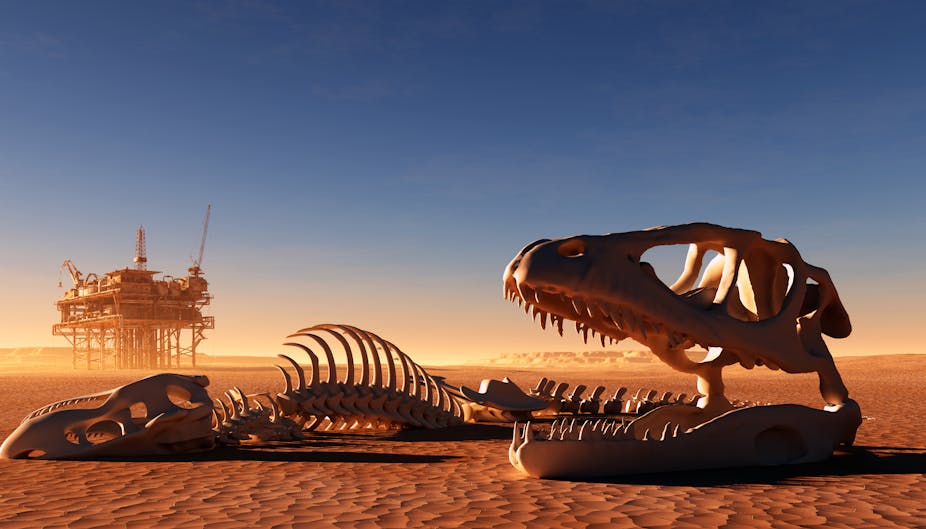The latest climate projections released last week by the Bureau of Meteorology and CSIRO predict that Australia could potentially warm by between 2.8C and 5.1C by 2090.
Meanwhile, the 2014 State of the Climate report, also produced by the Bureau and CSIRO, showed that Australia has already warmed by 0.9C since 1900, and that seven of the ten warmest years have occurred since 1998.
What actually happens will depend largely on the trends in greenhouse gas emissions. However, we can look to the past to begin to understand what the future may have in store.
Possible futures
The new projections hinge on RCPs (Representative Concentration Pathways) used by the Intergovernmental Panel on Climate Change (IPCC), which model a range of scenarios for for future greenhouse gas emissions, aerosols and land use changes. Here are the details:
Scenario A (known as RCP2.6) assumes very strong emission reduction from a peak at 2020 and a CO2 concentration of around 420 parts per million by 2100. Global mean temperatures would rise by 0.3–1.7C, while in Australia by 2080-99, temperatures would rise by 0.6-1.7C relative to 1986-2005.
Scenario B (RCP4.5) assumes slower emission reductions that result in CO2 concentrations of around 540 parts per million by 2100. In Australia by 2080-2099, temperatures would rise by 1.4-2.7C above 1986-2005.
Scenario C (RCP8.5) assumes a rise in emissions leading to CO2 concentrations of around 940 parts per million by 2100, leading to global temperature rise of 2.6-4.8C by 2081. In Australia by 2080-2099, temperatures would rise by 2.8-5.1C relative to 1986-2005.
Warming is projected to be stronger over land relative to the oceans and very strong in the Arctic. Hot days and heat waves are projected to become more frequent and cold days less frequent. Projected rainfall levels are not uniform, with increases at high latitudes and near the equator and decrease in the sub-tropics.
These changes reflect an expansion of the tropics and shrinking of polar circles, implying a shift of the earth’s climate zones toward the poles.
An increase is projected in extreme rainfalls and flooding. Sea levels would rise by 2080-2100 relative to 1986-2005, due to ocean thermal expansion and glacier and ice cap melting by 26-55 cm according to Scenario A and 45-82 cm according to Scenario C.
So which path are we on?
Atmospheric CO2 levels are currently rising at a rate of 1.97 parts per million per year, as you can see in the graph below. This represents an emissions rate which, if continued to 2100, would lead to an atmospheric CO2 level of 569 parts per million.
This level, consistent with Scenario B, implies a temperature rise of around 1.4-2.7C.

But if we increase our greenhouse gas emissions, CO2 levels may rise to 940 parts per million, resulting in temperatures between 2.8C and 5.1C. Such levels may be compounded by feedbacks from fires and methane release from permafrost. Shallow sediments and bogs could dramatically increase greenhouse gas emissions.
The problem is that we don’t know. As the chart below shows, we are entering uncharted territory.

The current rate of CO2 rise of around 2 parts per million per year exceeds historical rates over the past tens of millions of years – a period that probably includes the mass extinction that killed off the dinosaurs around 65 million years ago. A major unknown remains over the effects of such extreme rates on feedbacks from the land and ocean.
Why does it matter?
Given daily temperature variations which can reach as much as 50C between day and night, especially in mountain and desert terrains, some may ask why a temperature change of around 5C should be a source for concern?
The answer resides in studies of the evolution of the climate system: a global temperature change of around 5C represents a major shift in state of the climate. It is similar to the shift between glacial states and interglacial states, or following major asteroid impacts and global volcanic or methane release events, with attendant mass extinction of species.
Continents and regions dominated by deserts and/or by mountains, where cultivated land areas are marginal may suffer the most. In Australia, a desert and bush-dominated continent, expansion of arid terrains southward in South Australia and Western Australia would severely affect grain and livestock resources.
In these regions as well as southeastern Australia, the Eucalypt-dominated bush, originating under Mediterranean climate conditions, would be increasingly prone to fires.
A problem inherent in many climate models is their limit to the 21st century. Because melting ice and rising seas leg behind temperature, sea levels may continue rising well into the future. Under 2C warming, sea levels would eventually rise by 20-30 metres, as was the case in the Pliocene 2.6 – 5.2 million years ago, flooding coastal and river valleys where the bulk of human agriculture is located.
It may be too late to avoid the consequences of the present level of atmospheric Co2. However, the eleventh-hour warning by the IPCC, and the latest projections from the Bureau and CSIRO ought to alert civilisation there may still be time to avert the worst consequences.

